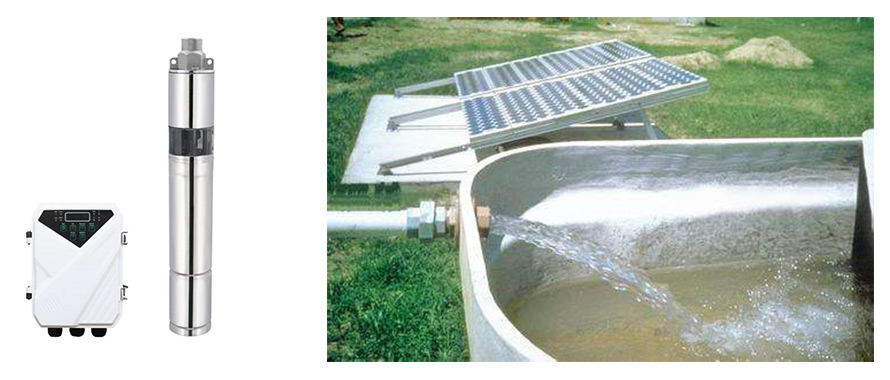In the photovoltaic off-grid system, the power parameter of the power inverter selecting is generally confirmed according to the load type and power of the user.
The load is classified into the following types according to the impedance property: Resistive load, inductive load, and capacitive load.
- The resistive load: The load with no phase difference between current and voltage is a resistive load, such as the electric cooker, bulb, electric furnace, electric soldering iron and so on.
- The inductive load: It is an inductive load if the current is one phase difference lagging behind the voltage, such as the washing machine, air conditioner, refrigerator, water pump, kitchen ventilator, load with motor, transformer, relay, compressor and so on.
- The capacitive load: It is a capacitive load if the current is one phase difference leading ahead the voltage, such as the compensation capacitor, computer, television and other household switching power supplies. The start-up power of the motor and other inductive loads is 5-7 times of the rated power. In calculating the power of the inverter, the start-up power of these loads should be taken into account.
If the load is an elevator or the like, it cannot be directly connected to the output terminal of the inverter. Because the motor will reverse when the elevator is descending, a counter electromotive force will be generated. When it enters the off grid inverter, it might damage the inverter. If a PV off-grid system is required, it is recommended to add a frequency converter between the inverter and the elevator motor.
If the photovoltaic off grid system is only used for pumping water, and a water tower can be built, it is recommended to select the photovoltaic pumping inverter, which can save costs. Such as a 2HP water pump, if an ordinary inverter is choosen, it can be driven with the off-grid inverter of over 5KW. In addition, it is required to be equipped with a battery of more than 200AH. The total cost is over 1500USD. However, if a pumping inverter is used, it only requires 2kW, which costs less than 450USD.

The waveforms of the inverter are mainly divided into two categories, one is the sine wave inverter and the other is the modified wave inverter. As to the modified wave inverter, it adopts the PWM pulse width modulation means to generate the modified wave output. Since there is a harmonic distortion of around 20%, it can't carry an inductive load such as an air conditioner, but it can carry a resistive load such as a lamp. The modified sine wave inverter adopts a non-isolated coupling circuit. The equipment has a simple structure and high efficiency. The pure sine wave inverter adopts the isolated coupling circuit design, which has a rather complicated circuit and a rather high cost. Therefore, it can be connected to any common electrical equipment (including TV set, liquid crystal display and so on, especially the inductive load such as the refrigerator) without any interference.
The inverter is divided into the high-frequency machine and power-frequency machine according to isolation. The inverter with a 50Hz power frequency isolation transformer behind it is called the power-frequency inverter. If the high-frequency switching element or high-frequency isolation transformer is used to substitute the power-frequency transformer in the inverter, it is the high-frequency inverter. The advantage of the power-frequency inverter is that the power components have stable and reliable operation, strong overload capacity and impact resistance. The disadvantage lies in low efficiency, heavy weight and high price. The high-frequency inverter has two types: High-frequency isolation and non-isolation. The advantage lies in the small size, high efficiency, and low price. The disadvantage is that the impact resistance is slightly lower. If the load is an inductive load such as a motor with a high impact , but it is not frequently moved, it is suggested to select the power-frequency inverter. If the load is a resistive load with less impact and it will be frequently moved, it is suggested to select the high-frequency inverter.
The output power of the inverter must be greater than the power of the load. For the monitoring station, communication station and other occasions with strict requirement, the output power is the sum of all the load powers. However, for the average poor family, considering that all loads cannot be turned on simultaneously, the sum of the load powers can be multiplied by a factor of 0.7-0.9, so as to save the cost.
